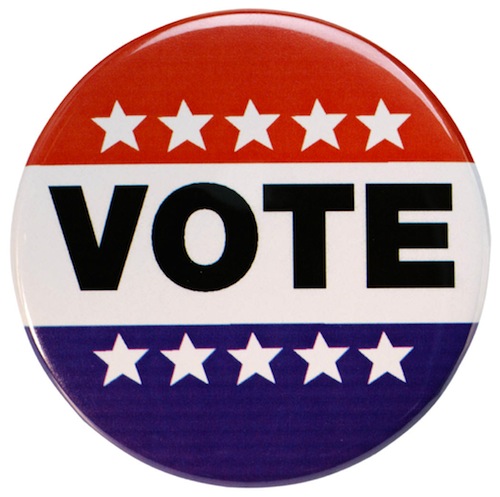We have a new study, so we have a new reason.
The state’s decision to kill straight-ticket voting could cut turnout in down-ballot races in the 2020 elections — even if more voters show up to the polls.
Sure, those additional voters will cast ballots for president and U.S. Senate. But voter interest and knowledge gets thinner and thinner as the ballots go on and on.
Without straight-ticket voting — where voters register support for all of their parties’ candidates with a single vote — down-ballot candidates will have to win with the support of the relatively few voters who make it past the marquee contests.
Two-thirds of Texans voted straight ticket in 2018. In 2020, candidates for offices like constable and justice of the peace will need all the help they can get from friends and family; it won’t be enough to rely on the straight-ticket voters.
In particular, Democratic candidates depending on a growing base of voters may suffer, according to a study done by the Austin Community College Center for Public Policy and Political Studies.
“Most analyses of the election contend that straight-ticket voting helped the Democratic Party candidates in certain types of counties — metropolitan and some suburbs,” authors Stefan Haag and Peck Young wrote. “And we agree that the increased competitiveness of Democrats in many counties was abetted by straight-ticket voting.”
It’s not so much that Democrats were depending on straight tickets for their strength; it’s that strong candidates at the top of the ticket — like Democrat Beto O’Rourke — were making it easier for the rest of the party’s candidates to win some votes.
[…]
“The greatest effect of the elimination of straight-ticket voting will probably not be the elimination of Texans voting for all candidates of one political party — the essence of straight-ticket voting,” the two wrote. “The effect will be that people will spend more time in the voting booth.”
You can see the study here, and you can read everything I’ve had to say on the topic here. The authors get some things right, in my opinion, including the conclusion that I quoted at the end there, but I’m not convinced yet that there will be a huge effect on downballot races. I’m especially not convinced that this is going to help Republicans win judicial races in Harris County again. The Harris County GOP has much bigger problems than that.
The main effect is to make voting take longer, which (it is hoped by the GOP) will not only make some (Democratic) people skip some races, but will also make lines longer and thus discourage some (Democratic) people from getting in to vote at all. There are other techniques they are employing towards this end as well.
The Texas Legislature never seems to pass up a chance to make voting harder, scarier, or more confusing. True to form, Texas was one of several states this year that restricted—rather than expanded—access to the polls.
HB 1888, which Governor Greg Abbott signed into law in June, goes into effect this week, effectively banning the use of mobile polling places, a strategy adopted by some counties to facilitate early voting in communities where people may have a harder time getting to a polling site. Travis County, for instance, has for the past several years operated dozens of temporary polling places at various times during the state’s two-week early voting window, opening up temporary sites at colleges, rural community centers, and senior living facilities. More than 28,000 people voted at those rotating polling sites last year, or nearly 6 percent of all Travis County votes cast during the 2018 midterm election.
However, since the county can’t afford to turn all of those temporary polling places into permanent early voting sites, as required by HB 1888, some areas accustomed to having early voting won’t get it during the 2020 election, according to Travis County Clerk Dana DeBeauvoir. “We’re struggling with what to do for some of these communities now,” DeBeauvoir told the Observer. “We won’t be able to open polling places that some people have gotten used to.”
It’s all of our responsibility to find ways to keep lines manageable and give everyone the best chance to vote in a timely manner. A couple of suggestions come to mind:
1. If you are 65 years old, or will be by Election Day, you are eligible to vote by mail. Take advantage of it.
2. The best days to vote early are Tuesday through Friday of the first week of early voting, and the Monday and Tuesday of the second week. If you’ve made it to Thursday of the second week of early voting, go ahead and wait till Election Day. Those last two days of early voting, especially the very last day, are by far the busiest. Don’t make it more so.
3. If you really want to go the (literal) extra mile, find the lower-volume early voting locations and vote at one of them. You can look back at my daily EV reports to see which places to seek out. Vote first thing in the morning (7 AM during the second week), later in the morning (like between 9:30 and 11), or early afternoon (say between 1:30 and 3) to avoid the commute and lunchtime crowds.
4. If you have the time, sign up with your county to be an election judge, so that if they do want to open another EV location, they will have the staff for it.
Every little bit helps. When we finally take over state government, we can work on actually fixing this. Until then, do what we can to not make things worse.

